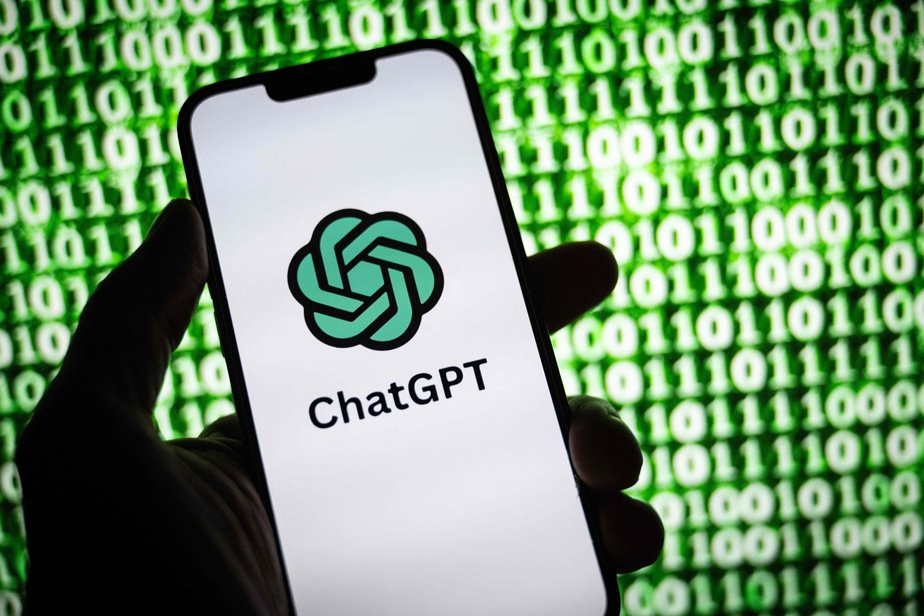For around ten years now, I have been testing the waters with experienced users to learn how to design basic apps or video games without the dozens, even hundreds of hours of training required. The conclusion that always stood out: impossible to ignore this training.
I have no solid foundation in computer science, just some coding to play around in Windows 11. Which is probably more than the average bear, but won’t get me hired at Apple. Due to lack of time, I gave up.
Until I candidly asked ChatGPT. Through the Bing search engine, which uses ChatGPT 4, I gave him a simple command: “Create an app to convert between Celsius and Fahrenheit. » His answer: 22 lines of computer code and an explanation: “You can use a programming language such as Python or Java. Here is an example of Python code that performs this conversion. »
Which doesn’t mean much to me. How do you use Python? “You can download Python from the official website Python.org.” Computer codes, he advises, can be copied and pasted into an editor like Visual Studio Code (code.visualstudio.com) to create a file with a .py extension. Like “conversion.py”, my first application.
In Windows 11, simply go to the command prompt, from the folder where the script is located, and type “python converter .py”. And here is the result of my first app. I won’t make a fortune, but it works.
We can surely make it prettier. Let’s ask ChatGPT for the same thing, a Python script, but with “GUI”. The 46 line code is already more complex. When I run it I get an error telling me that “tkinter” is not found. Back to ChatGPT: What to do? “Type the following command: pip install tk.” This message will come up often, it allows you to install different Python modules with the “pip install” command. We take note.
And we get this app, pompously called “Nice Converter”, with a field for entering temperature, two buttons for choosing Celsius or Fahrenheit, and a button for Convert.
Here, in a short video of 1 minute 29 seconds, is the entire process for this “nice converter”.
The basis is there. With Python and Visual Code Studio installed, I ordered the same thing from ChatGPT: “Create a Python script with GUI…” with small variations, to create applications in less than five minutes. I obtained in quick succession an arithmetic test and a quiz on Quebec, five questions concocted by ChatGPT with four answer choices each. If the math test, which was supposed to be “secondary level 3”, seemed a little corny to me, the questionnaire on Quebec was sometimes surprising. What is the name of the traditional Quebec song often played at weddings? When is the next sovereignty referendum scheduled?
La bastringue and “no date planned” are the answers, ChatGPT tells us.
And we add as much as a tool to obtain the average distance between the planets of the solar system, and a little fun allowing us to determine the distances between seven Quebec cities that we choose from a drop-down menu. None of this is revolutionary and won’t generate millions of downloads, but it’s a nice start.
It is possible to create a standalone version of these apps, which anyone can open without having to install Python and its modules. Just ask ChatGPT: you basically have to install the “pyinstaller” module with the good old “pip install pyinstaller” command. We can then create an executable file for any Windows user.
Of course, ChatGPT has its limitations.
An attempt, for example, to create an application in which the user types the names of two Quebec cities to calculate distances, using Bing Maps on the recommendations of ChatGPT, resulted in nothing. When I asked him to deliver a script for drawing a cat and a boat, he provided this very funny result.
Let’s validate all of this with Nicolas Bourré, computer science professor at Cégep de Shawinigan, a ChatGPT user whom I interviewed last May. The use of Python is approved. “It’s the de facto language for doing small tools, top-level academic stuff. It’s very easy to learn, it’s super popular and there’s a whole community behind it. »
The professor’s main advice is to “break up” the requests. “For the Celsius to Fahrenheit converter, for example, you then ask for two fields, you tell it that you would like to save the history of the calculations, you add little features piece by piece. »
On the other hand, as soon as it comes to querying databases and going beyond “the simple calculator”, to modify variables in computer code, the uninitiated will be stuck, he believes. “You’ve experienced it: when it doesn’t work, you kid. You are missing the key concepts to debug the code. But there is enough stock with ChatGPT to have fun. »
